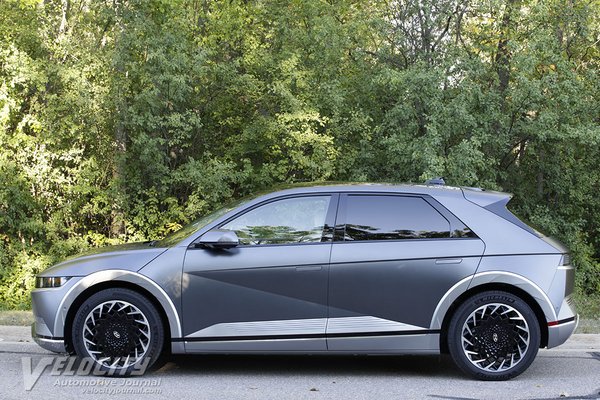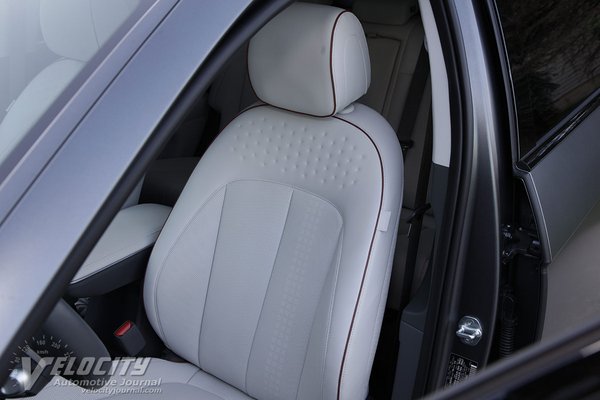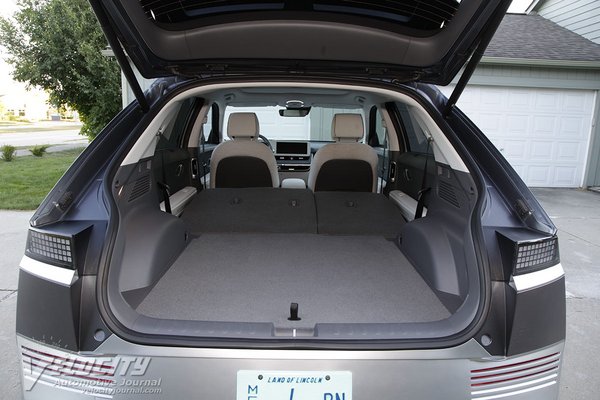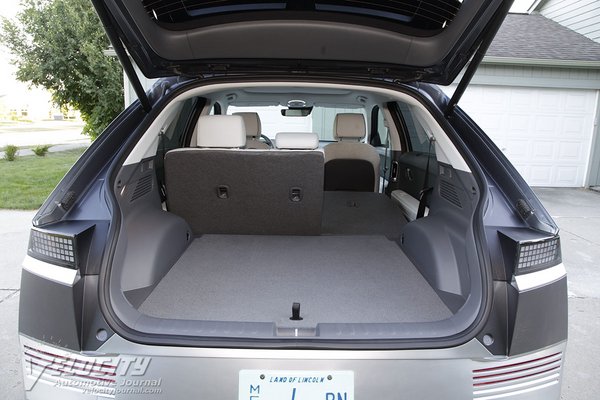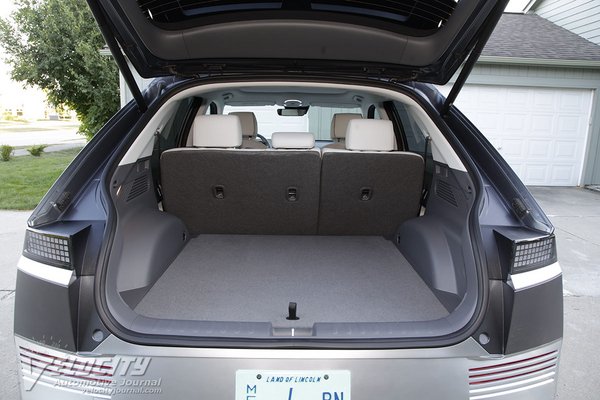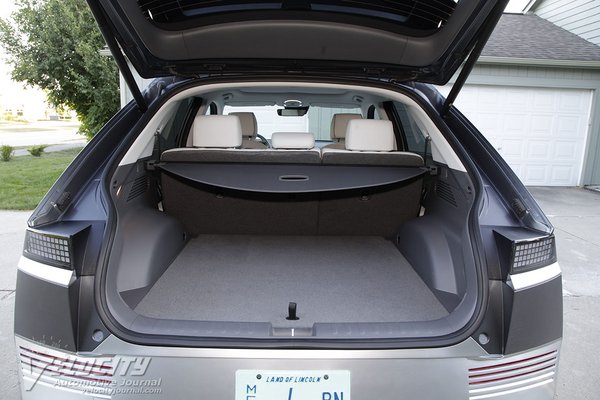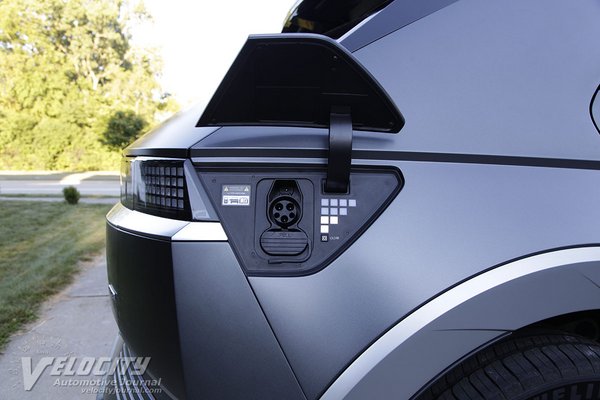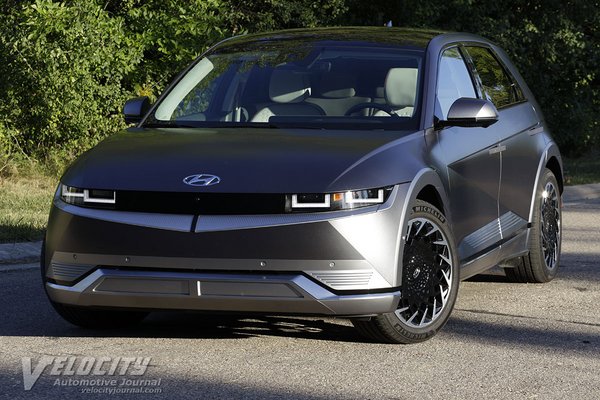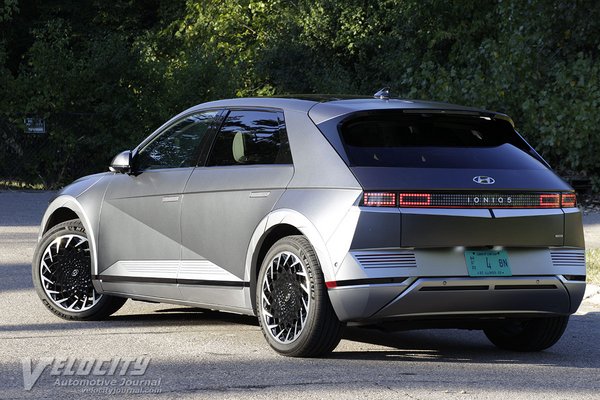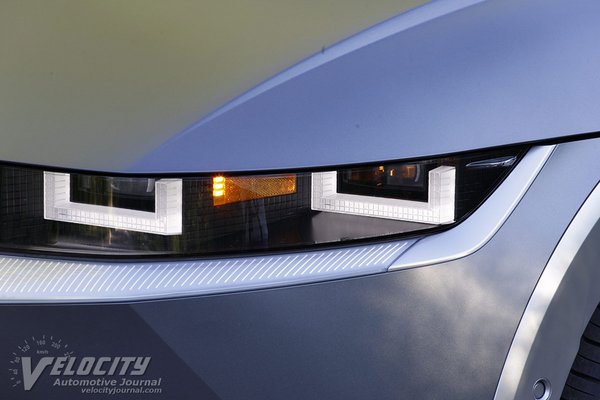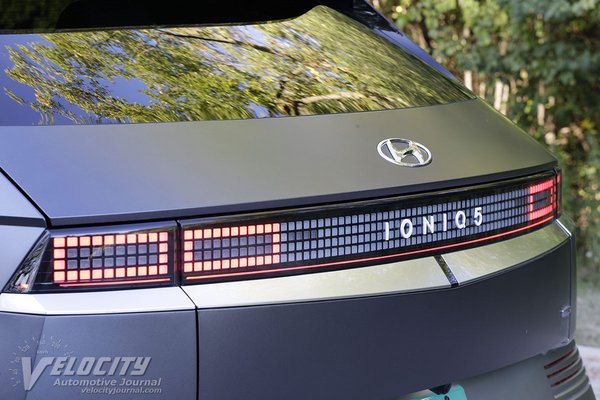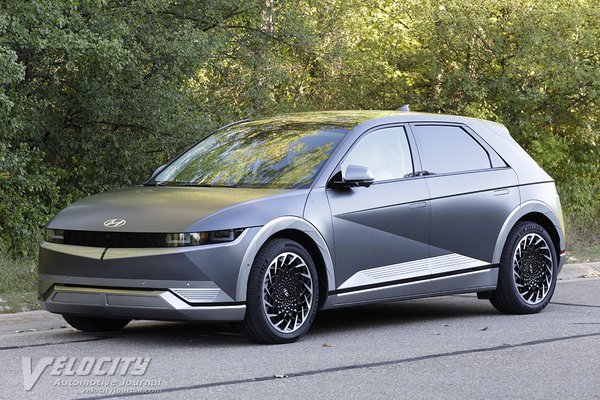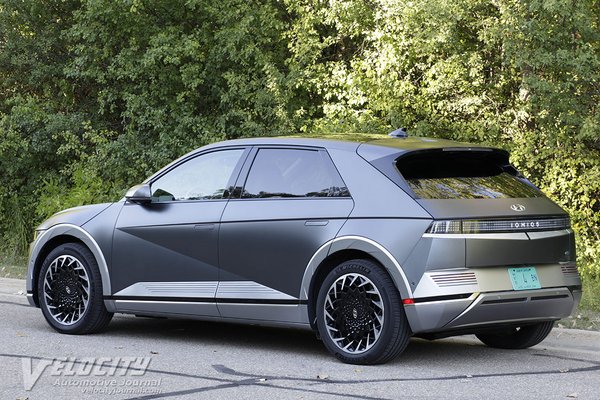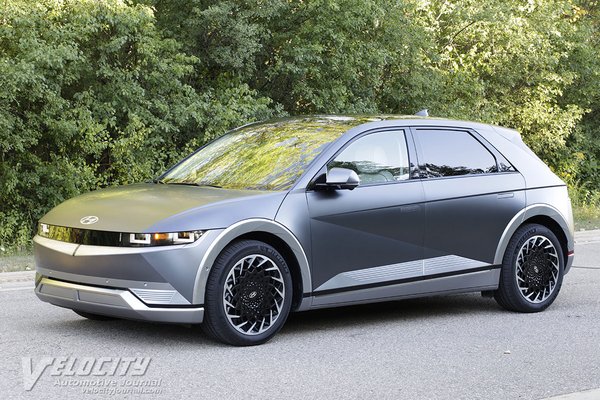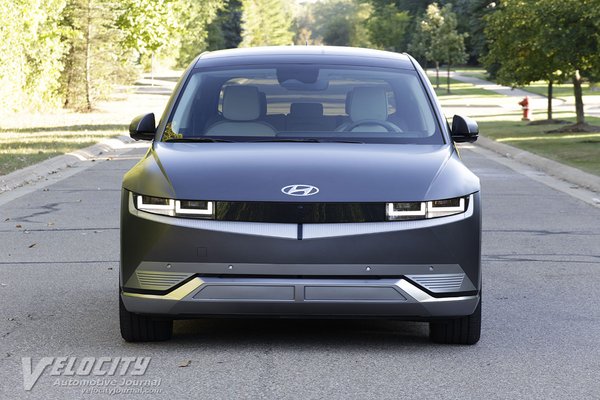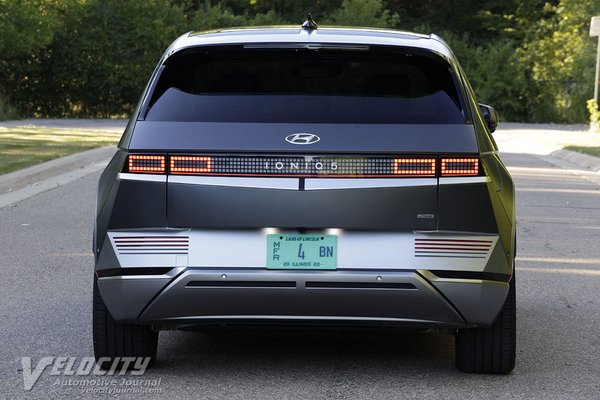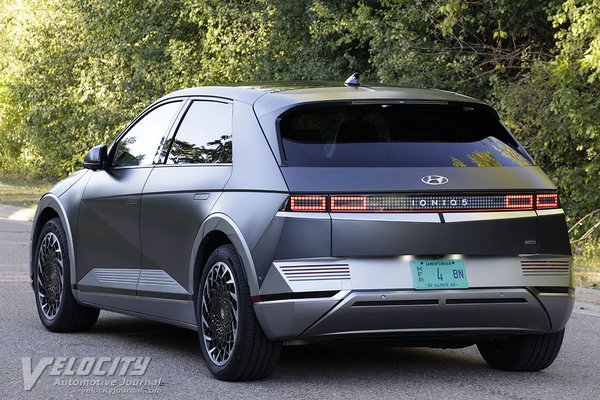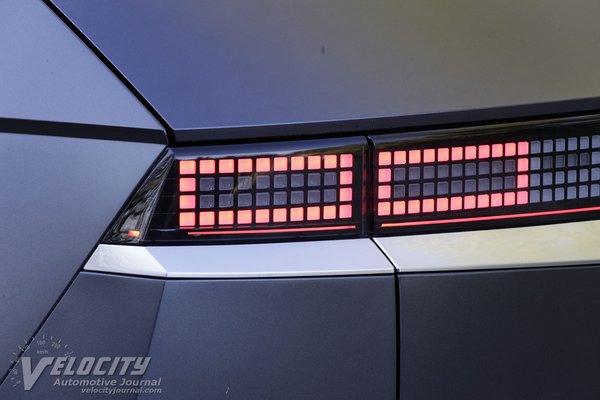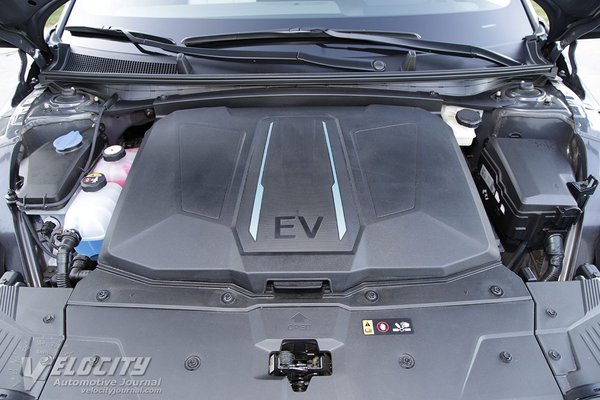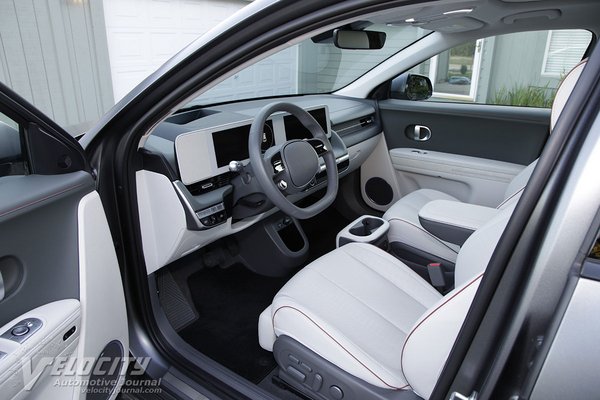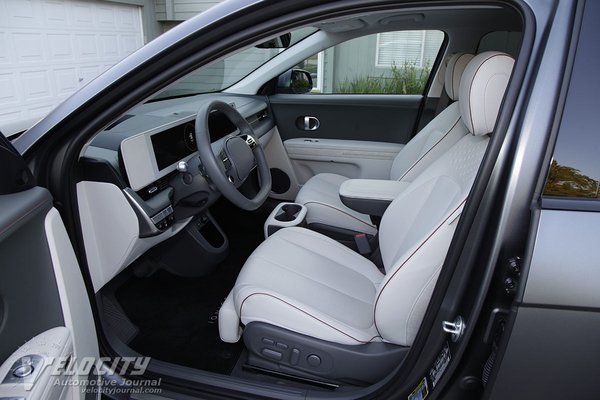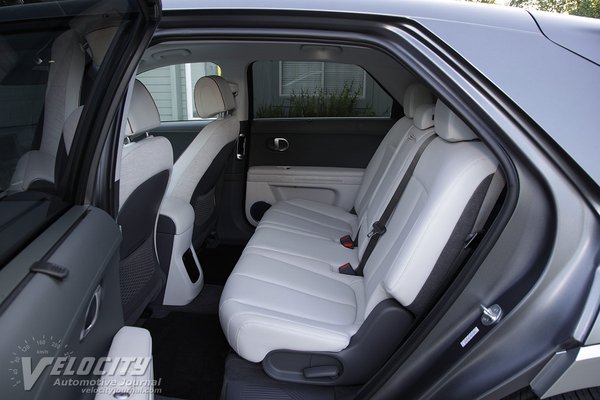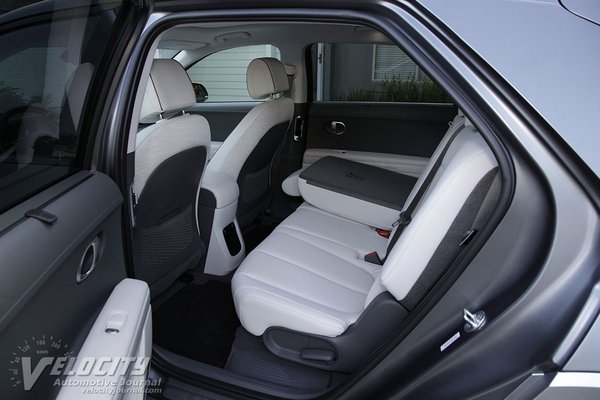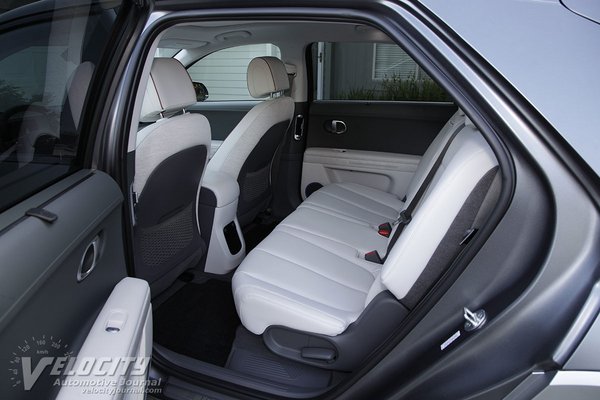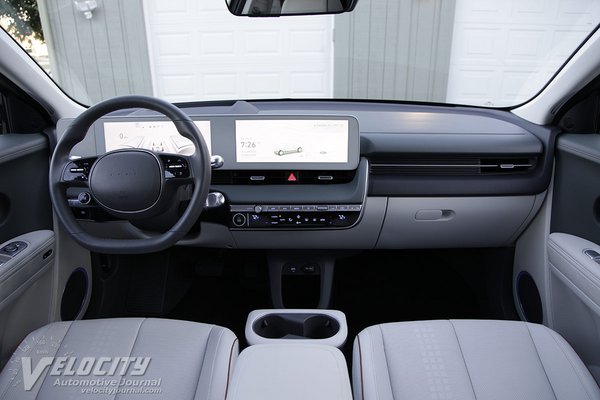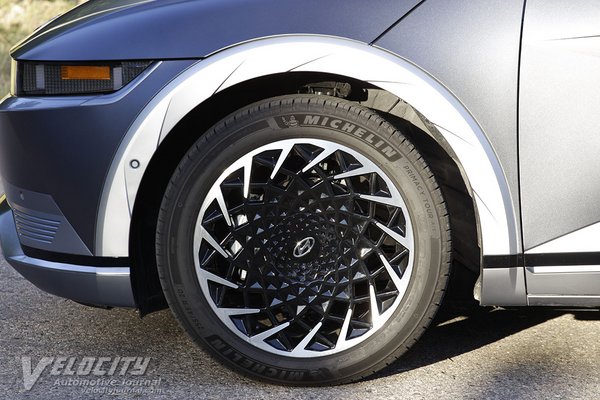2022 Hyundai Ioniq 5 Limited AWD
11/28/2022
Shahed Hussain
Hyundai's first Ioniq models had both gasoline/electric hybrid and EV powertrains, but the Ioniq Electric was nearly indistinguishable from its hybrid siblings, and Hyundai spent minimal effort marketing it. The new Ioniq 5 EV is based on the E-GMP platform shared with Kia. Available in both RWD (single motor) and AWD (dual motor) variants in four trim levels, the Ioniq 5 is priced and equipped competitively against other EVs in its class.
Pricing for the 2022 Ioniq 5 currently starts at $39,950 (SE Standard Range) and tops out at $55,000 (Limited). Note that pricing has increased for both 2022 and 2023 models. We tested a 2022 Ioniq 5 Limited AWD ($54,600) with minimal options: shooting star paint ($1,000), and carpeted floor mats ($195). Adding the $1,225 freight and handling fee totaled up to $56,920. Notable standard equipment includes heated and ventilated front seats, 8-way power driver and passenger seats, heated leather-wrapped steering wheel, 12.3-in. digital instrument cluster, 12.3-in. infotainment display, Android Auto and Apple CarPlay, head-up display, rearview monitor, 8-speaker Bose(R) audio system, panoramic glass roof, and 20-in. alloy wheels. Significant safety technologies include: forward collision-avoidance assist, lane keeping assist, rear cross-traffic alert, and parking collision avoidance assist.
Hyundai uses permanent-magnet synchronous AC motors to power the Ioniq 5 in three configurations: 168 hp/258 lb.-ft. (RWD/Standard Range), 225 hp/258 lb.-ft. (RWD), and 320 hp/446 lb.-ft. (AWD). Dual motors: 74 kW + 165 kW (equivalent to 320 hp total) are used for the AWD powertrain. A single-speed gearbox (2.263:1 ratio) coupled to each motor connect the final drive (4.706:1 ratio) for the front and rear axles. The front axle can be disconnected via a dog clutch to reduce friction and increase range. The base Standard Range models is fitted with a 522.7V/58 kWh lithium-ion polymer battery pack; all other models get a larger capacity 697V/77.4 kWh pack.
Aside from the expected 240V AC Level 2 charging, the Ioniq 5 has two fast-charging DC modes: 150kW (400V) and >250kW (800V DC). According to Hyundai, charging times from 10-80% under ideal conditions are 18 min. (>250 kW) or 25 min. (150 kW). A Level 2 charger is estimated to charge from 10-100% in 6 hrs. 43 minutes. We used a local 350 kW charging station to charge from 54-91% in 20 minutes, and a 100-kW charger to charge from 40-90% in 30 minutes. Consider a 120V outlet only for emergencies; we could only trickle charge (0.6-0.7 kW), which is too slow to be practical. The Ioniq 5 has V2L (vehicle-to-load) capability to charge small electronic devices and other EVs, using an adapter that plugs into the exterior charging port. Estimated range for the dual-motor AWD Ioniq 5 (SE/SEL/Limited) is 256 miles. The RWD Ioniq 5 is rated for 220 miles (SE Standard Range), or 303 miles with the higher capacity battery pack (SE/SEL/Limited). During our evaluation, we averaged 3.1-3.4 miles per kWh, equivalent to a range of about 240-260 miles, comparable to Hyundai's estimate. According to the EPA, the AWD Ioniq 5 is rated at 118/87 (city/hwy.) MPGe. Hyundai claims that the AWD Ioniq 5 accelerates from 0-60 MPH in <5 seconds, up to a top speed of 115 MPH.
The Ioniq's suspension uses MacPherson struts in front, and a rear multilink design with coil springs and dampers. A motor-assisted rack-and-pinion steering system is geared for 2.67 turns lock-to-lock. Brakes are vented discs (12.8-in. dia.) in front and solid discs (12.8-in. dia.) in the rear. The AWD Limited rides on 255/45-R20 Michelin Primacy Tour A/S all-season tires mounted on 20-in. alloy wheels (19-in. on other Ioniqs). Curb weight for AWD models ranges from 4,464 to 4,662 lbs., of which 1052 lbs. is from the battery pack.
The Ioniq 5 shares Hyundai's current design interior design theme of dual tablet-style screens for digital instrument and infotainment displays. A dual-spoke steering wheel has integrated controls for phone, audio, active driver aids and s drive mode button. Paddles behind the steering wheel adjust brake regeneration settings for efficiency. The shifter stalk sprouts from the right side of the steering column. Twisting the stalk shifts from Park to Drive or Reverse; push the end to re-engage Park. Climate control settings are located below the touchscreen infotainment display. A storage bin under the dash has 12V and USB port to charge and connect portable mobile devices. Additional storage and two USB ports are available in the center console bin. Dual cupholders with integrated USB ports are located between the front seats. A wireless charging pad for mobile phones is standard on SEL and Limited models.
Hyundai's interior packaging benefits from the E-GMP platform's flat floor, increasing legroom. The Ioniq's front seats provide decent lateral support, but the lumbar adjustment location is too high to be effective. Like other simulated leather, Hyundai's H-Tex(TM) feels a bit rubbery, but it's close enough that most people are unlikely to notice. Front and rear headroom is acceptable for passengers up to 5'-10", limited by the panoramic glass roof. Rear passengers benefit from ample legroom and comfortable seats. Rear vents and dual USB ports ensure that back seat occupants are not neglected. A 120V outlet is available below the rear seat.
Hyundai was clearly focused on easing the transition for customer accustomed to driving gasoline-powered vehicles into EVs. When set to the Normal mode, the powertrain acceleration is tuned for smooth acceleration without an initial torque spike that can jar passengers. We occasionally noticed minor torque steer at low speeds, but only when the accelerating rapidly. In Sport mode, the immediate torque launching from a stop feels jerky and unpleasant, so we generally preferred Normal mode for typical driving. Switching to Eco mode weakens acceleration so substantially that the Ioniq 5 feels lethargic. Unless extracting every last mile of range is a priority, the Normal mode is the probably the best option for most people.
Although EVs are known for excellent low speed acceleration, most affordable models don't have the power needed for acceptable highway passing performance. The AWD Ioniq 5 is a notable exception: above 70 MPH, the powertrain has adequate reserves to deliver surprising acceleration despite its 2.5-ton curb weight. Wind and tire noise are subdued, and the motors are barely audible at 70-80 MPH.
The Ioniq doesn't aim to be a sport sedan, yet its suspension is tuned for tight damping and low body roll. Minimal understeer and accurate steering make the Ioniq fun to drive on winding roads. On the highway, the suspension effectively absorbs road impacts to deliver a compliant, yet controlled ride quality. Hyundai optimized the Ioniq's brake system to transition from regeneration to friction brakes nearly seamlessly at speeds below 20 MPH. Brake pedal effort feels linear at all speeds.
As Hyundai's second-generation EV, the Ioniq 5 is an impressively refined vehicle without significant flaws to detract from its overall excellence. The Ioniq's DC fast-charging capability significantly reduces charge time, assuming a high wattage charging station is available. Based on our experience, a Level 2 AC charger is essential to keep the battery topped up when the Ioniq is parked. Although the base RWD Ioniq 5 SE Standard Range is an excellent value for customers living in warmer climates, stepping up to the Ioniq 5 SE adds optional AWD, higher power motors and the larger battery pack. In the expanding field of affordable EVs, the Ioniq 5 demands few compromises.

